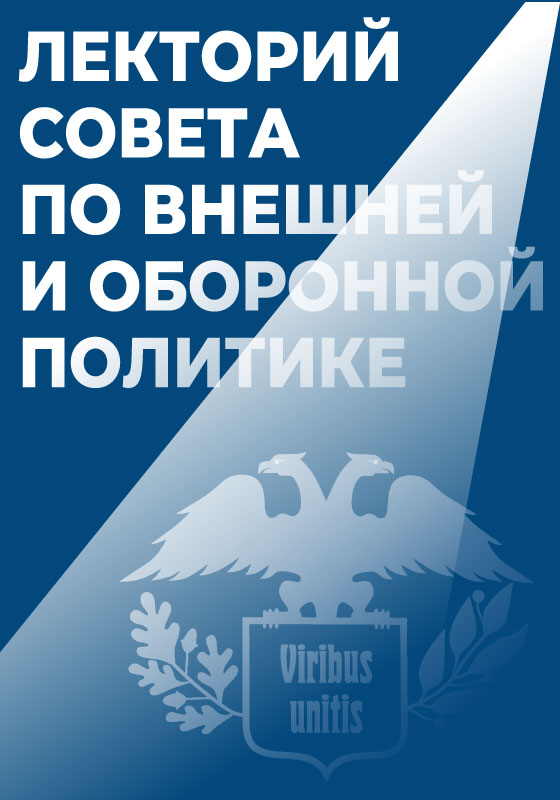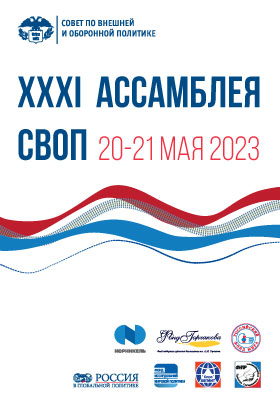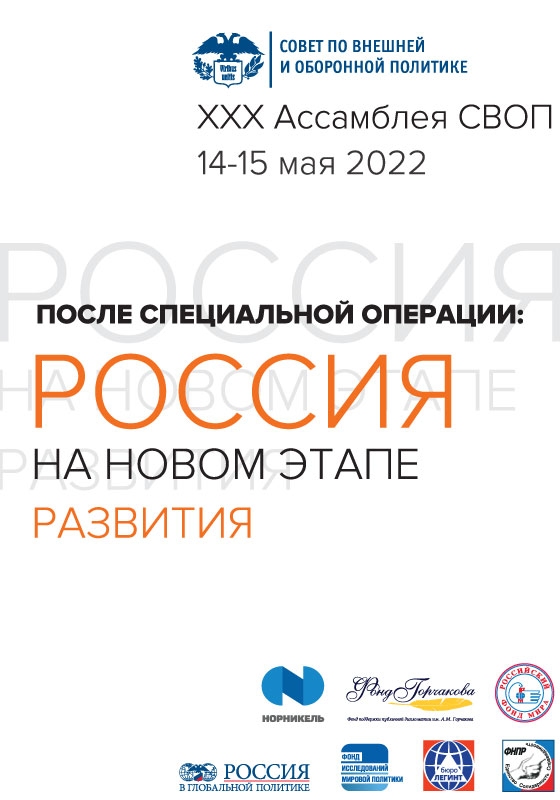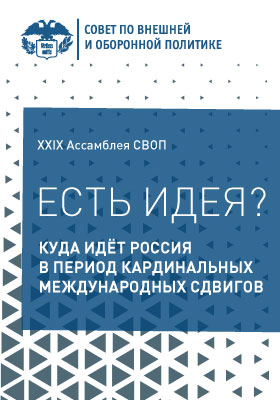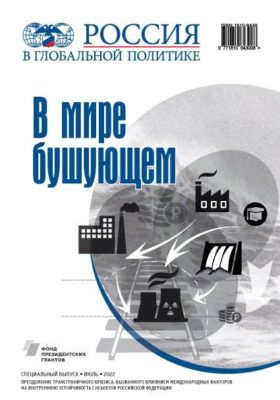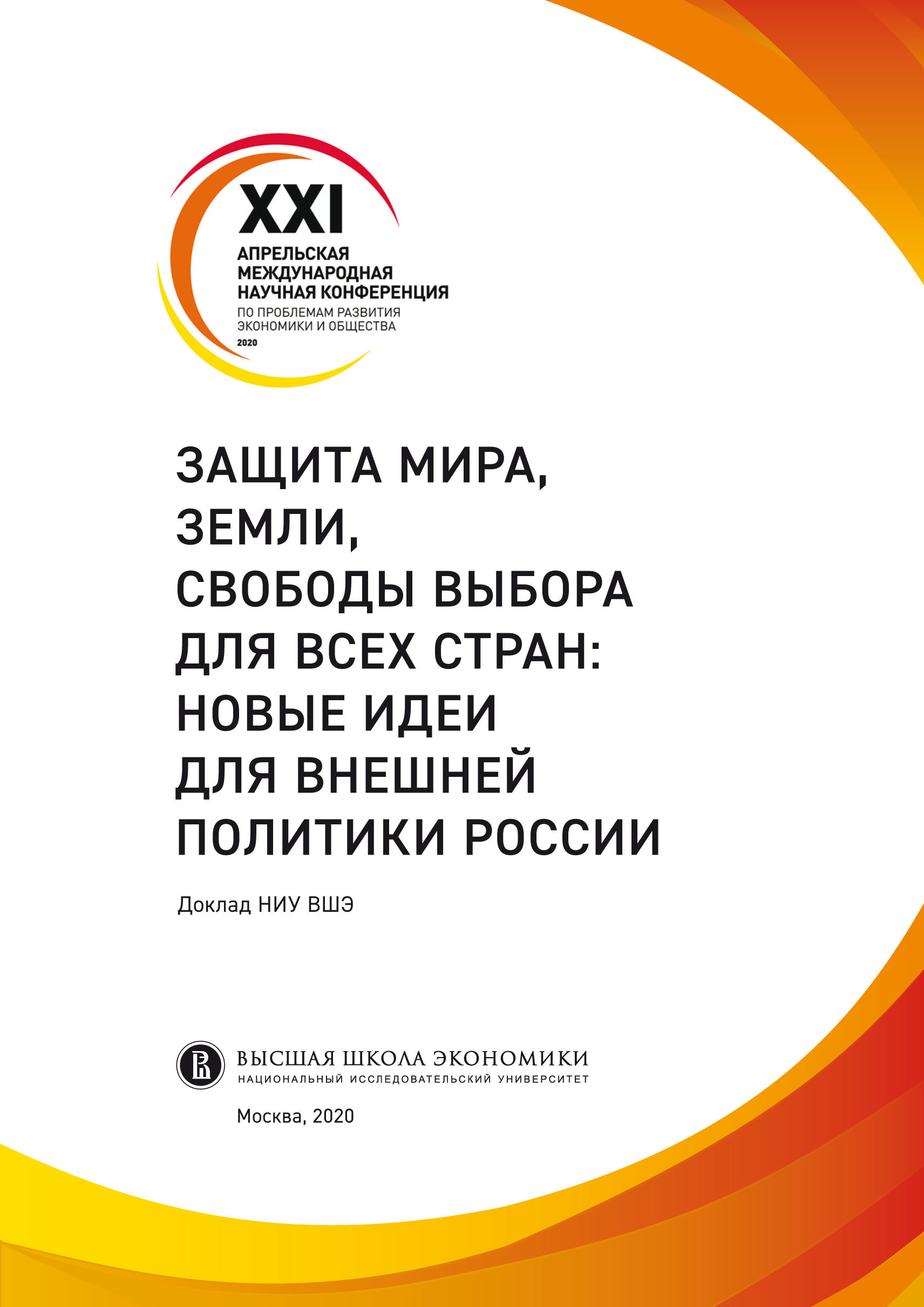How to Mend Rifts between East and West
True, dialogue is unable to produce final solutions to global problems or achieve the triumph of world peace. But it is a mandatory condition for the coexistence of civilizations, cultures, peoples, and countries, of the West and the “Easts.”
The great English journalist, writer, poet and novelist Joseph Rudyard Kipling wrote: “Oh, East is East and West is West and never the twain shall meet/Till Earth and Sky stand presently at God’s great Judgment Seat.” Most quoted is usually the first line of Kipling’s ballad, while the mention of God’s great Judgement Seat tends to be omitted more often than not. In the meantime, its meaning is of no small importance. Later it will be explained why.
In the Soviet blockbuster of the 1970s The White Sun of the Desert (its genre often described as “Red Western” or “Ostern”), narrating adventures of a Red Army soldier in the vast expanses of Central Asia in the first years after the Russian revolution, the main character, Comrade Fyodor Sukhov, proposed his own understanding of the nature of the relationship between the West and the East: “The Orient is a delicate matter!” Both Kipling’s and Sukhov’s attitudes still prevail in the public mind in both Europe and the Americas, let alone Russia. In the East, though, where very few these days may remember the English author of the 19th century and still less are familiar with the philosophy of Russia’s fictional Red Army soldier, there is a great certainty the East has no reason to seek accord with the West whatsoever. For the indigenous easterners their East is more sophisticated and better.
All this may seem quite obvious. Yet some questions remain. Number one is: “What is the West?” Question number two is “What is the East?” And lastly: “How internally homogenous are both?”
EVERYTHING IS MORE OR LESS CLEAR WITH THE WEST
It is homogenous geographically, religiously and culturally. It goes without saying that the West is diverse inside. Europe and the Americas lie on the opposite sides of the Atlantic Ocean. There are American and European mentalities. There is “greater” (Western) Europe and there is smaller (Eastern) Europe. There are Catholic Italy, Spain and Portugal, there are protestant Germany and Scandinavia, and there are Orthodox Serbia, Bulgaria and Greece… But at the same time there exists the eternal civilizational kernel. However multicolored and wide its paradigm may be, its existence is a hard fact. These days this kernel looks friable. Some politicians and pundits even call its future in question. Yet it is still there for the time being and the chances it will fall apart in the lifetime of the current generations look slim.
In contrast to the rest of the world the West is successful politically and militarily and this is what keeps it together. The West has outperformed the East to have emerged the winner in competition. The Western model—be it the U.S. or European version—has turned out more effective and viable than the Eastern one. The political culture that kept the West going and developing has proved more effective, although it was accompanied by all sorts of “collateral costs”—from the Inquisition to Nazism. Lastly, the West shares a common religion (although split into several confessions): Christianity. In a word, the term ‘West’ instantly brings to mind a specific entity existing within certain civilizational boundaries.
(Here I use the term ‘civilization,’ which despite endless attempts to come up with a precise definition of it still remains rather “enigmatic”).
WHAT IS EAST?
Originally, the East was understood geographically as everything lying east of the West. The East was a place where the Sun rose to make its daily journey across the sky. The East and all of its areas—from the Far Eastern to Islamic ones—were perceived as an antagonist of the West—“orientalistically,” so to speak.
This approach has repeatedly come under criticism and at a certain point seemed to be hopelessly defeated by outstanding philosopher Edward Said. Yet Orientalism has displayed remarkable viability. The very existence of such a specialty as Orientalist is vivid proof of that (while there is no such profession as “occidentalist”). The author of this article graduated from the Institute of Oriental Languages. These languages are like different worlds. Chinese hieroglyphs, Arabic and Burmese letters, and Hindi—in contrast to the similar alphabets of European languages—illustrate the heterogeneity of the East, which even in linguistic terms is an intricate combination of cultural segments.
Proceeding from the divergence of eastern cultures and religions one may readily surmise that the West is confronted not with the East but with many “Easts,” distinctions between them being no lesser, if not greater, than between each of them and the West. Just one example: from the standpoint of religion China and India are incomparable. Or take another part of the East—the Muslim world. With its monotheism and commitment to the Avramic tradition it stands far away from two other “Easts”—Buddhist-Hinduist and Confucianist. In a sense it is much closer to the Christian West.
Oddly enough, it is this ontological and, if you wish, existential similarity that makes relations between the West and the Muslim East most strained. They are like relations between siblings who are in discord with each other, unable to settle a dispute over a common monotheistic heritage. Just as it was in the Middle Ages, Islamic theology regards Christianity as an imperfect, even primitive variety of monotheism, which has failed to do away with the rudiments of paganism. Muslim theologians argue the Holy Trinity and the humanization of God are the main manifestations of this. It is noteworthy that the West these days is being accused by Muslims not so much of distorting monotheism as of neglecting religion as such.
In general, it turns out that the definition of the East as “Non-West” is the easiest and most comprehensible to a Western mind. Many politicians will have to grudgingly agree with this.
The current realities as they are, the East is geographically associated with the South, which is most conflict-prone and where most challenges to the rest of the world are likely to emerge. Several years ago my colleague, Dmitry Trenin, and I authored a book devoted to the North Caucasus. We called it The Time of South. The English language version of it was out of print under the title Russia’s Restless Frontiers. The Chechnya Factor in Post-Soviet Russia. Possibly, for the foreign reader the English name makes more sense, but I have to remark that the original Russian one was deeper and reflected the situation better: The time of South for Russia is the time of the Muslim East. For Russia (for the Soviet Union) that time began long ago and it has continued up to the present day. It is just enough to take a look at Russia’s policy in the Middle East and in the Muslim world in general.
In discussing Russian affairs one cannot but say a few words about its place in the West-East (or rather West-Easts) polyphony. It looks like this place has not been firmly determined yet and can hardly be identified unambiguously. Russia is part of the West, but it is the West’s eastern part. This stems from its religion, culture, language (the Cyrillic and Latin alphabets consist of basically the very same letters, although they have different graphic images).
On the other hand, Russia can be regarded as one of the “Easts” by virtue of its geographic location, its eastern border which is several thousand kilometers long, certain similarity of traditions and, lastly, its poly-ethnicity. The traditions of most of Russia’s ethnic minorities differ from those of the Slavic majority. Moreover, in the Russian Empire and in the Soviet Union the country’s eastern status was never called in question, not least because large territories of it remained purely Muslim. Besides, Russia colonized the East, just as the West did, and incorporated it. The Russian Empire and the Soviet Union were a mixed type “Western-Eastern” state.
It may be discussed at length to what degree Russia is part of the West. Vigorous debates on that score are endless. At this point it would be appropriate to say that most Russian citizens associate themselves with the West, more precisely with Europe, and not with the “Easts.” Incidentally, just recently one could hear quite often: “We (Russians) are very much like Americans: we have so much in common.” And just recently the author of this article heard a young intellectual in Chechnya utter a very unexpected opinion: “We Chechens are turning increasingly European.” One cannot but recall the sacramental phrase “The Orient is a delicate matter.” And also the frequently quoted stanza by Russia’s 19th century poet Fyodor Tyutchev: “Russia cannot be understood with the mind alone.” (The same applies to Chechnya).
It would be utterly inappropriate to repeat banalities and indulge in speculations once again to the effect Russia is very special and represents some “civilization in its own right” (it would be more appropriate to describe it as a “sub-civilization,” however derogatory this term might look to some). However, it is a hard fact that Russia holds a special place between the West and the “Easts,” in full conformity with a widely-spread theory and ideology of neo-Eurasianism, which was revitalized in the 1990s largely for time-serving political purposes of the day.
At a certain point it was customary to liken Russia to a bridge connecting the West and the Muslim East. In 2005, Russia joined the Organization of the Islamic Conference (since 2011 the Organization of Islamic Cooperation), hoping that it would promote greater mutual understanding between the Muslim world and the West and enhance its own status of a world power. The “bridge concept” looks pretty much like neo-Eurasianism. Culturally (civilizationally) it is an interim one. The question is to what extent this interim state contributes to the development of society and serves its well-being. For how long it will be possible and reasonable (if at all) to take this “Eurasian” niche is anyone’s guess.
Russia’s Europe-Asia dualism was reflected in its classical literature. Anton Chekhov, Maxim Gorky and Ivan Bunin acknowledged their country’s similarity with the East, but at the same time maintained that its innate “Asiatic” properties cause extremely adverse effects on society and curb development, so the country should orient itself towards the West. Bunin said that Russia was “getting bogged down in Asiatic ways and dust.” And Chekhov once remarked that “our pride and self-esteem are European, while development and doings are Asiatic.”
That Russia takes up an interim niche creates problems for the West in communicating with it, for it is hard to decide whether it is a friend, a segment (albeit a very special one) of the European tradition, or it is something qualitatively different and alien to that tradition. In other words, for the West it remains unclear whether it is talking to a “close relative” or a total alien. The anti-Western sentiment that keeps growing within Russian society with encouragement from the ruling class merely exacerbates the West’s estrangement from Russia.
Civic society, democracy and human rights-related issues are another important example. The West insists on Russia’s strict observance of Western standards, because it draws comparisons with its own self. At the same time human rights violations that may occur some other place in the East (China, the Arab world or Central Asia) are being watched calmly and “with understanding.”
In relations with the East Russia has fewer problems of this kind. For the East Russia is an outsider and accepted as it is, with all of its strengths and weaknesses. No criticism is heard there at all.
Incidentally, in the West, too, Russia is increasingly accepted as it is, and not criticized for not being what some would like it to be. Possibly, this may ease the task of mutual communication to a certain extent.
About the dialogue proper. The classical or customary bilateral dialogue at the global level is devalued. It is obsolete (although the customary term will be occasionally used in this article). It would be logical to put this word in quotation marks. The widest contacts, multilateral and systematic ones, among the bearers of several cultures and traditions are essential.
As a rule, political factors restrict such communication, because the parties involved in the “dialogue” are most often individual countries and their ruling elites, which do not proceed from the abstract notions of the West and the East. Above all they are guided by their countries’ national interests or, strictly speaking, their own understanding of these interests. “National egoism” is invariably present here. It is intrinsic to both the West and the “Easts.”
For pragmatically minded politicians it is very instrumental to appeal to traditions, cultures and “civilizational identity.” However, at the same time it would be wrong to ignore their commitment to identity, not least because it constitutes the landscape where all social and political dramas unfold. In this context the Germans, the French, the Scandinavians, and the Americans, whatever the distinctions among them, remain “the team of the West,” just as the monarchies and presidents of the Middle and Near East remain the Muslim team, and the leader of the Communist Party of China is a bearer of China’s own tradition. This circumstance should not be exaggerated or ignored. One must proceed from the harmony of unity and distinctions in the abovementioned “teams.”
Economic and political ties are originally established on a bilateral basis. Each state builds its relations with a specific partner—another sovereign state. However, it cannot but take into account the counterpart’s civilizational affiliation. Moreover, sometimes one can see attempts at legitimating relations with a civilizational area. Barack Obama in his speech at Cairo University was discussing relations between the United States and the Muslim world. The phenomenon of Russian-Muslim relations is also a reality.
Contacts between the West and the “Easts” at meetings of representatives of civic society, culture and science are simpler and more humane. Of course, a certain political and ideological flavor is present here, too, but mutual sincere interest and the wish to understand each other prevail. This is so because the participants are not responsible for making political decisions. But it is this “irresponsibility” and informality that furnishes the basis for a productive dialogue. As the director of St. Petersburg’s Hermitage Museum, Mikhail Piotrovsky said, “Culture is a remedy against mutual enmity.”
A great deal is being said these days about the importance of inter-religious communication. Great problems exist here, though representatives of religious confessions more often than not avoid acknowledging this in public. Naturally, central to all meetings arranged by religious figures is the idea of their common striving for peace. However, most such events are rather formalistic and the opportunities for frank discussion are minimal. I would not blame this on anyone in person. Each religion rests upon the unshakable certainty about one’s own righteousness and possession of the ultimate truth. Not to mention the fact that monotheistic religions brush off many local beliefs (like paganism). Unlike literature and the arts, religions are competition-targeted. Religions get ever more politicized. All propose their own formulas and models of society, government and business, which they deem to be the best. Certainly, all this devalues their mutual contacts.
Ours is a post-secular era.
Demand for contacts (dialogues) acquires special importance amid the overall upsurge in conflicts at the end of the 20th and beginning of the 21st centuries, in a number of cases, religiously fueled ones.
Humanity has always existed and developed in the context of a harsh West-East standoff. It is not accidental that Samuel Huntington, a frequent target for criticism from his opponents, coined the term ‘clash of civilizations.’ This clash is a product of history. It is an objective law. It is unavoidable. Civilizations, in this particular case the West and the “Easts,” will clash again and again. Their bearers neither have anything to be ashamed of, nor should they offer excuses or plunge into conspiracy theories to look for the culprits—either in the West or in the “Easts.”
Huntington’s definition may be adjusted somewhat. What if we replace “clash” with “friction,” which sometimes may produce sparks? No one will be able to cancel this friction of civilizations—a consequence of their eternal interaction. This friction may even be useful (in physics it is known that there is no motion without friction).
The West and the “Easts” have been fighting each other since antiquity. Alas, wars between them are one of the main trends in world politics. However cynical it may seem, the interaction of cultures was one of the results military expeditions by Alexander III of Macedon (also known as Alexander the Great) brought about. The same applies to nomadic invasions, Muslim intrusion into Europe and even colonial conquests.
With the passage of time the interaction of the West and the “Easts” turned mono-vectored. As it outperformed the rivals scientifically, technologically, economically, and militarily, the West began to conduct the dialogue from the position of its own supremacy. In fact, it was a dialogue between the winner and the loser, with the latter showing not the slightest intention of succumbing to this state of affairs. The West started proposing (dictating) its own values both intentionally (via politicians) and unintentionally (via scientists and culture workers). Some in the “Easts” accept them, while others emphatically reject. Globalization as a specific type of dialogue, which, too, has come from the West, is seen in the “Easts” as a form of expansion, and their inhabitants reserve the right to resist and even reject it.
Inter-civilizational communication always caused rifts and splits inside the “Easts.” Russia is not an exception. The country’s split into “westernizers” and their opponents—let us call them “traditionalists” —occurred back in the 16th century and kept growing from century to century ever since. However, as world experience shows, a majority in society adheres to traditionalist views. Steadfast traditionalists hate lecturing and advice, even if it does them good. Confronted with innovations intruding from outside, they usually wince with disgust, if only the latter are not purely utilitarian.
The paradox is that Russia (in 1917) once accepted a Western innovative model (its Marxist version) and tried to implement it on home soil. A Marxist-Leninist utopia was the net effect. An attempt at the synthesis of domestic traditions and a foreign theory ended in failure only to bring about the collapse of statehood.
IS THERE A RISK OF MILITARY STANDOFF BETWEEN THE WEST AND ITS OPPONENTS?
The answer is: “It’s almost impossible.” But what does this “almost” reservation, equal to tiny fractions of a percentage point, mean then?
Firstly, the world is unpredictable in principle. It is impossible to predict with absolute certainty either the discovery of a new asteroid, or the Global Flood, or climate change near the North or South Pole. Secondly, the latter circumstance will cause tremendous, if not decisive, influence on the redistribution of resources, such as land and water, on the migration of peoples, on the development of civilizations and regions and, consequently, on the West’s dialogue with the “Easts.” Hence the risk of a struggle for living space. Thirdly, a radical religious and political trend—Islamism—has come to the fore in the Muslim East. This phenomenon should not be regarded as something exclusive. It is rooted in the intention to implement a self-styled Islamic alternative and to “reformat” the state and society on the basis of the Islamic tradition. Inside Islamism there emerged a wing of ultra-extremists, whose members are out to attain their aims within the tightest deadlines and at any cost. The extremists meet with certain understanding from part of the world ummah. The readiness for self-sacrifice in the name of their ideas is another image-bolstering factor. They kill priests and passers-by, blow up planes, and take hostages in schools and theaters. Terrorists are not bandits. Had they been just felons, the struggle with terrorism would not have turned out so complicated and time-consuming. Many analysts agree that it is still very far from completion. What will happen if tomorrow these people lay hands on chemical weapons and the day after tomorrow, on nuclear weapons? Then there may really occur something like God’s Great Judgment, which Kipling wrote might follow when the West and East clash.
* * *
Dialogues by two or more partners, and other forms of communication these days are as essential as they have never been before. Any meetings, whatever they may be called, will be productive only if each partaker really wishes to listen to and understand the conversation partners. On the contrary, if the ultimate aim is to dictate opinions and demonstrate one’s own exclusiveness, which is often the case, tensions will merely soar. The dialogue will inevitably turn political.
A dialogue is an eternal process that began thousands of years ago. True, it is unable to produce final solutions to global problems or achieve the triumph of world peace. But it is a mandatory condition for the coexistence of civilizations, cultures, peoples, and countries, of the West and the “Easts.” Its concrete achievements are not always obvious and readily seen. The very instance of such continued communication, to which there is no alternative and cannot be any, is a great success. It is impossible to present a detailed account to the sponsors each meeting, conference or round-table discussion surely has. There is no chance of presenting to them some absolutely positive material result. The only hope is for their common sense and their wish to genuinely contribute to maintaining normal relations between the West and the “Easts,” between ordinary people, at last.
I would dare say that everybody is obliged to take part in the dialogue—the civil society, the clergy, the politicians, etc.
On the cover of the brochure published by the Atlantic Council and the Primakov Institute of the World Economy and International Relations (IMEMO) Global System on the Brink: Pathways towards a New Normal shows Atlas carrying the world on his shoulders. Atlas’ body is riddled with deep cracks to symbolize us, the human race. We are the only ones who can do something to make these crack-like wounds heal.




